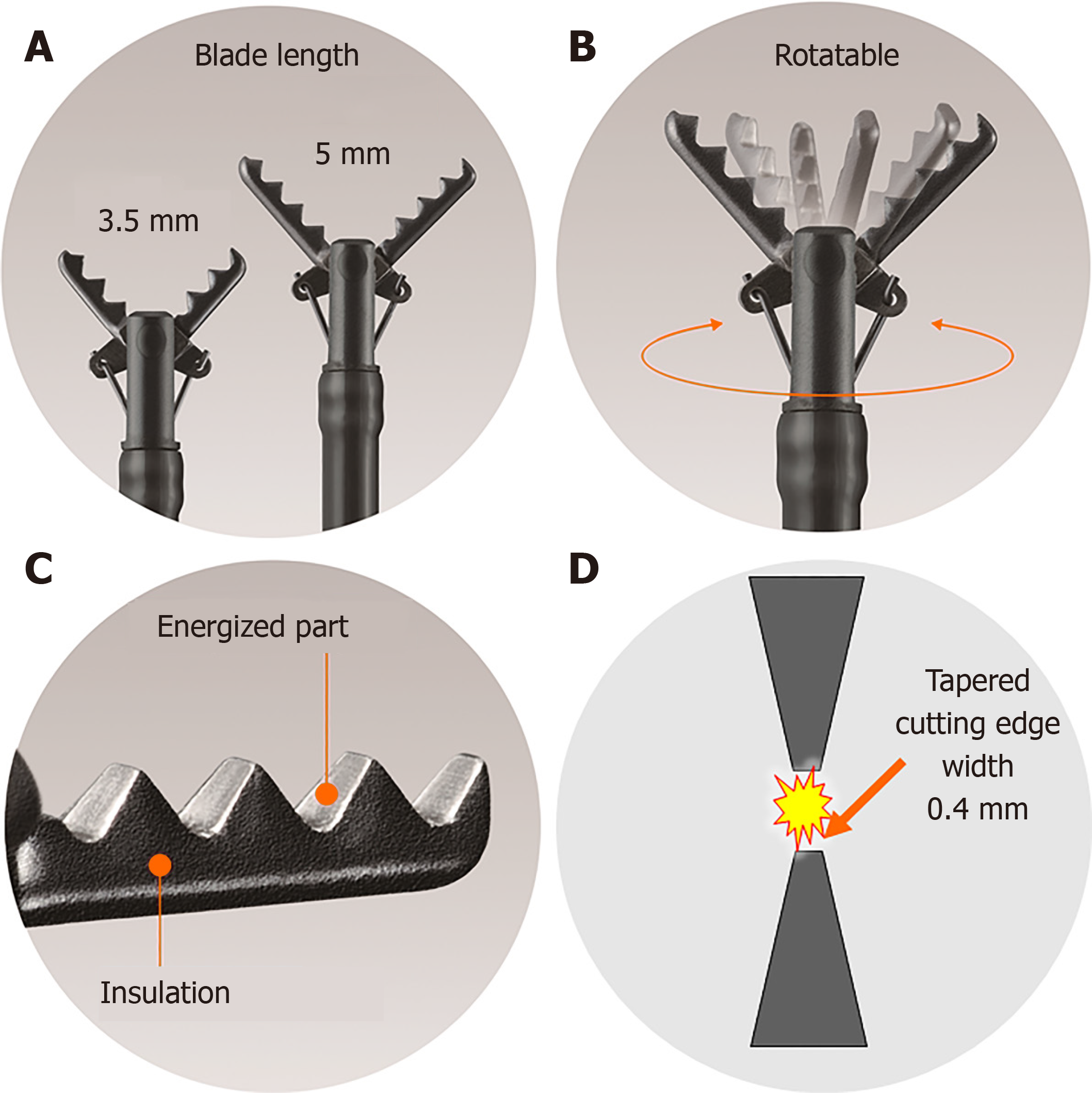Copyright
©The Author(s) 2021.
World J Gastrointest Surg. Aug 27, 2021; 13(8): 772-787
Published online Aug 27, 2021. doi: 10.4240/wjgs.v13.i8.772
Published online Aug 27, 2021. doi: 10.4240/wjgs.v13.i8.772
Figure 1 Mechanical features of the clutch cutter.
A: Two blade lengths (5 mm and 3.5 mm) are available. The blade is saw-toothed over the entire length of the scissors; B: Rotatable. The blade part can rotate 360°; C: The cutting edge is serrated, and all surfaces other than the cutting edge are insulated; D: Sectional view of the cutting edge. The cutting edge is tapered to a width of 0.4 mm, which is the same width as the polypectomy snare, so that the tissue can be pressed and cut. Quoted and modified from Akahoshi et al[16] and Fujifilm (https://asset.fujifilm.com/master/jp/files/2020-07/bbd3e2ffc64eb7d6cd4e135f80339d46/endoscopy-esd-clutchcutter-catalog.pdf) with permission. Citation: Akahoshi K, Kubokawa M, Tamura S. Clutch Cutter (Long type & Short type). In: Yahagi N. Electrosurgical units for therapeutic endoscopy-Settings and Its effective usage. 3rd ed. Tokyo: Japan Medical Center, 2020: 177-184.
- Citation: Akahoshi K, Komori K, Akahoshi K, Tamura S, Osada S, Shiratsuchi Y, Kubokawa M. Advances in endoscopic therapy using grasping-type scissors forceps (with video). World J Gastrointest Surg 2021; 13(8): 772-787
- URL: https://www.wjgnet.com/1948-9366/full/v13/i8/772.htm
- DOI: https://dx.doi.org/10.4240/wjgs.v13.i8.772









